GitHub Actions
Continuous Deployment with GitHub Actions
If Expressions and Pull Request
We’ll configure our GitHub Actions workflow so that feature branches trigger only development jobs, while the main branch runs production deployments. By using if expressions like contains and exact branch comparisons, you can maintain a single workflow file and control which jobs run on which branches.
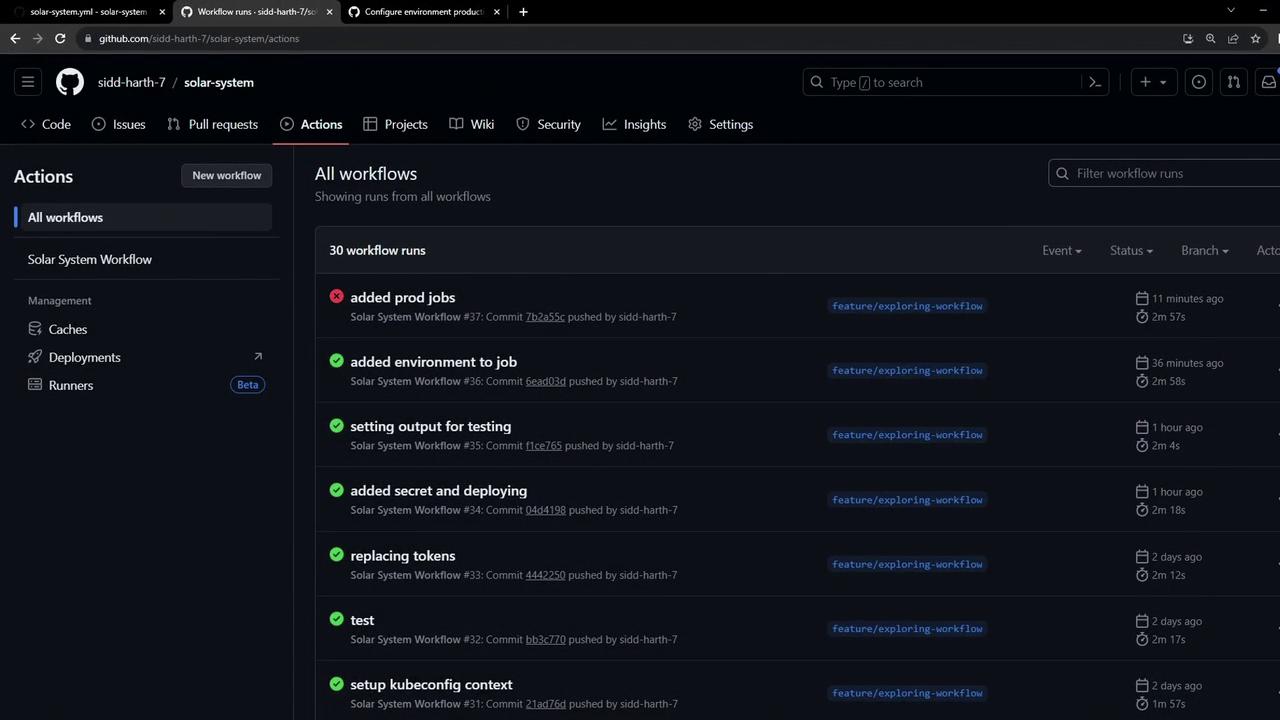
Workflow Overview
Our workflow defines seven jobs and global environment variables:
env:
MONGO_URI: 'mongodb+srv://supercluster.d8jj.mongodb.net/superData'
MONGO_USERNAME: ${{ vars.MONGO_USERNAME }}
MONGO_PASSWORD: ${{ secrets.MONGO_PASSWORD }}
jobs:
unit-testing: …
code-coverage: …
docker: …
dev-deploy: …
dev-integration-testing: …
prod-deploy: …
prod-integration-testing: …
Desired Branch Conditions
| Job Name | Feature Branch (feature/*) | Main Branch (main) |
|---|---|---|
| unit-testing | ✓ | ✓ |
| code-coverage | ✓ | ✓ |
| docker | ✓ | ✓ |
| dev-deploy | ✓ | |
| dev-integration-testing | ✓ | |
| prod-deploy | ✓ | |
| prod-integration-testing | ✓ |
Configuring Conditional Jobs with if
GitHub Actions supports if expressions on jobs. We’ll use:
contains(github.ref, 'feature/')for feature branchesgithub.ref == 'refs/heads/main'for themainbranch
Note
The if expression runs at the job level. Jobs whose conditions evaluate to false are marked as skipped.
1. Dev Jobs
Add if: contains(github.ref, 'feature/') to both development jobs:
jobs:
dev-deploy:
if: contains(github.ref, 'feature/')
needs: docker
runs-on: ubuntu-latest
environment:
name: development
url: https://${{ steps.set-ingress-host-address.outputs.APP_INGRESS_HOST }}
outputs:
APP_INGRESS_URL: ${{ steps.set-ingress-host-address.outputs.APP_INGRESS_HOST }}
steps:
- name: Checkout repository
uses: actions/checkout@v4
# …other deployment steps…
dev-integration-testing:
if: contains(github.ref, 'feature/')
needs: dev-deploy
runs-on: ubuntu-latest
steps:
- name: Validate Deployment URL
env:
URL: ${{ needs.dev-deploy.outputs.APP_INGRESS_URL }}
run: |
echo "Testing URL: $URL"
curl -s $URL/health | jq
2. Prod Jobs
Guard production jobs with an exact branch check:
jobs:
prod-deploy:
if: github.ref == 'refs/heads/main'
needs: docker
runs-on: ubuntu-latest
environment:
name: production
url: https://${{ steps.set-ingress-host-address.outputs.APP_INGRESS_HOST }}
outputs:
APP_INGRESS_URL: ${{ steps.set-ingress-host-address.outputs.APP_INGRESS_HOST }}
steps:
- name: Checkout repository
uses: actions/checkout@v4
# …other deployment steps…
prod-integration-testing:
name: Prod Integration Testing
if: github.ref == 'refs/heads/main'
needs: prod-deploy
runs-on: ubuntu-latest
steps:
- name: Validate Production URL
env:
URL: ${{ needs.prod-deploy.outputs.APP_INGRESS_URL }}
run: |
echo "Testing Prod URL: $URL"
curl -s https://$URL/live | grep -i '"status":"live"'
Testing on a Feature Branch
Commit and push to a feature branch. You’ll see only the Docker and dev jobs run, while production jobs are skipped:
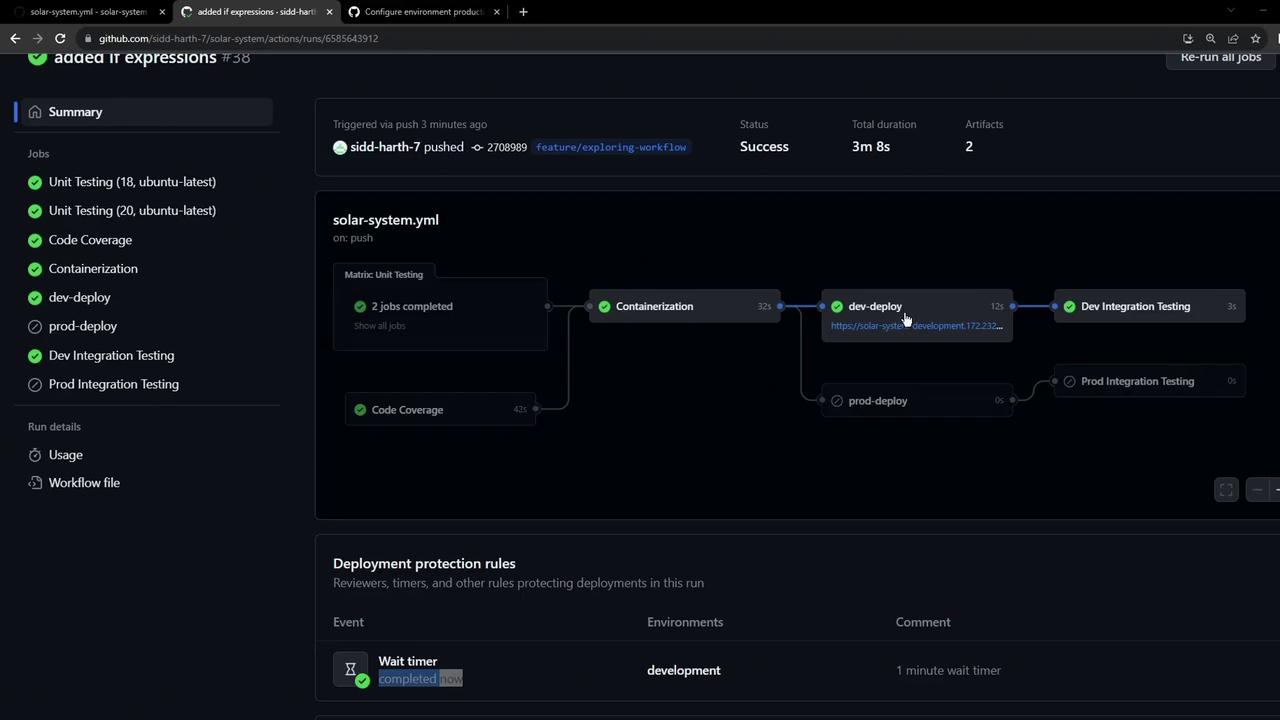
Skipped jobs indicate their if condition evaluated to false.
Raising a Pull Request
When you open a PR into main, all checks should pass and your dev-deploy URL is available for reviewers:
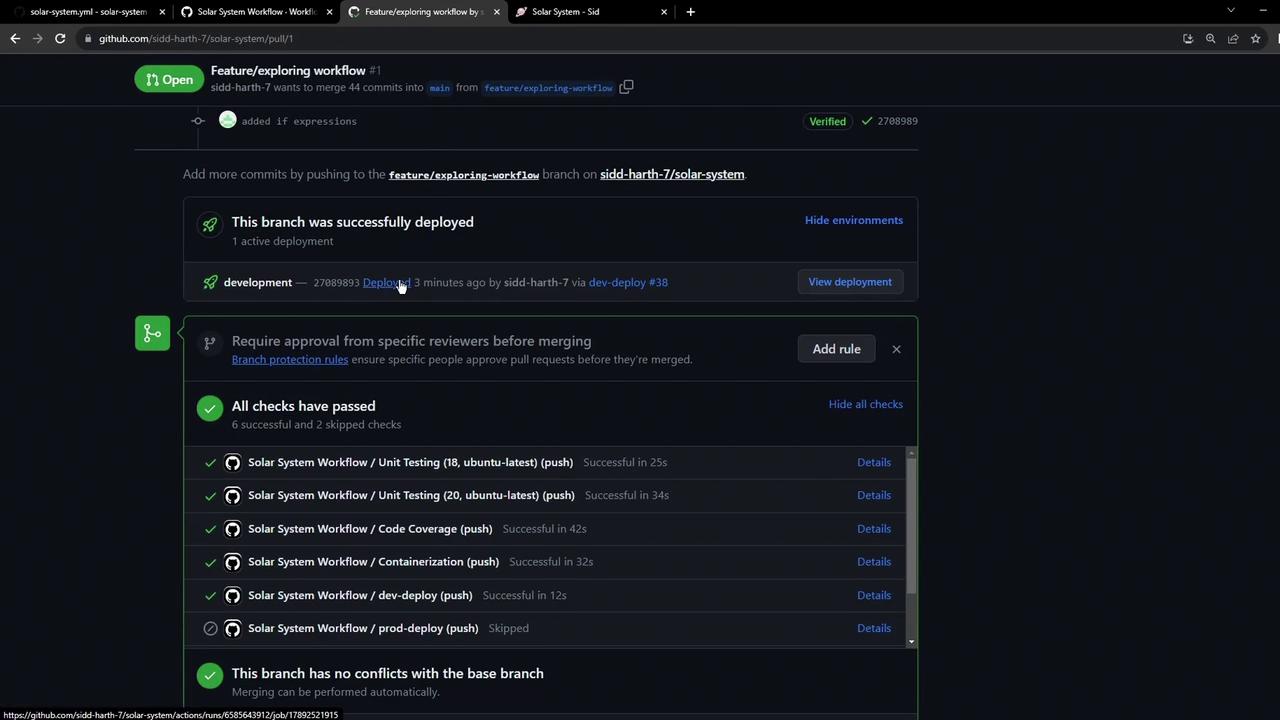
Reviewers can click the deployment link to preview your changes before merging.
Production Deployment Approval
After merging, the workflow on main triggers production jobs. If you’ve enabled environment protection rules, you’ll see a “Review pending deployments” prompt:
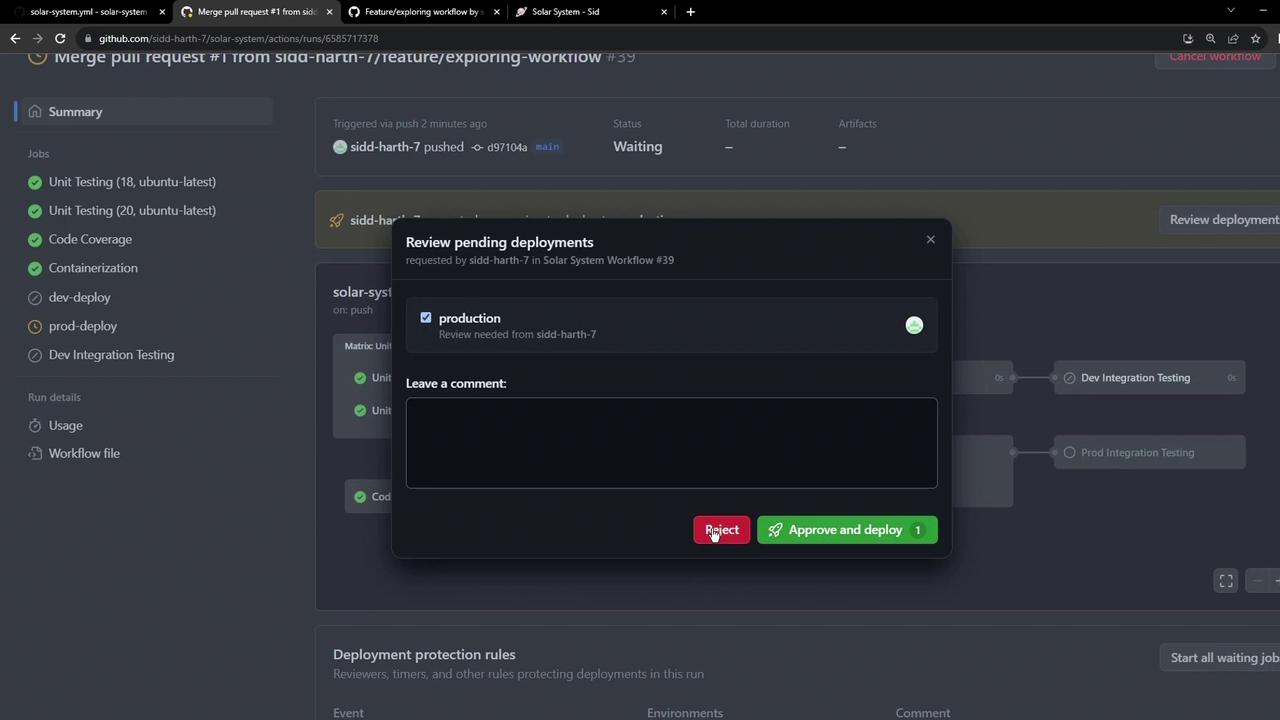
Warning
Ensure you’ve configured environment protection rules in your repository settings to require manual approvals before Production deployments.
Final Workflow Summary on main
Once approved, only the production deploy and integration tests run on main:
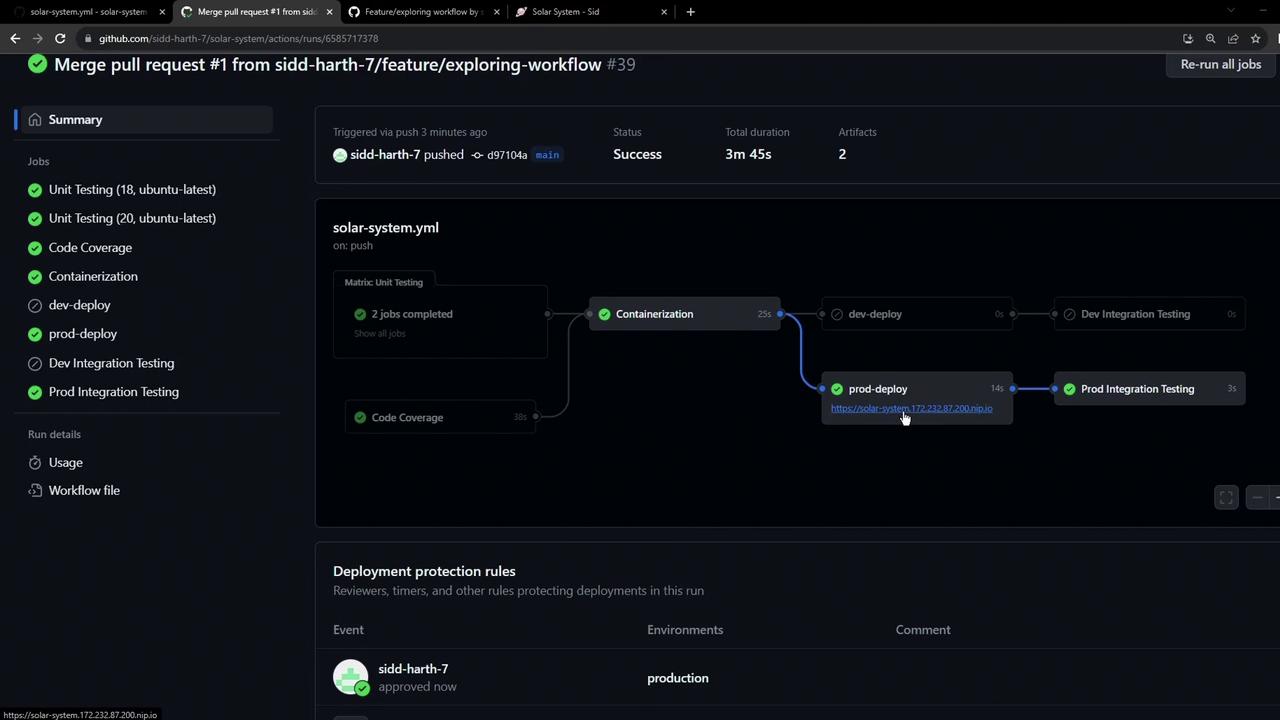
All checks pass, and the production environment is live.
Viewing All Deployments
In the Environments tab, you can filter by environment, view deployment statuses, associated branches, and pull requests:
Explore the dashboard to monitor, retry, or roll back deployments—all from the GitHub UI.
References
Watch Video
Watch video content
Practice Lab
Practice lab